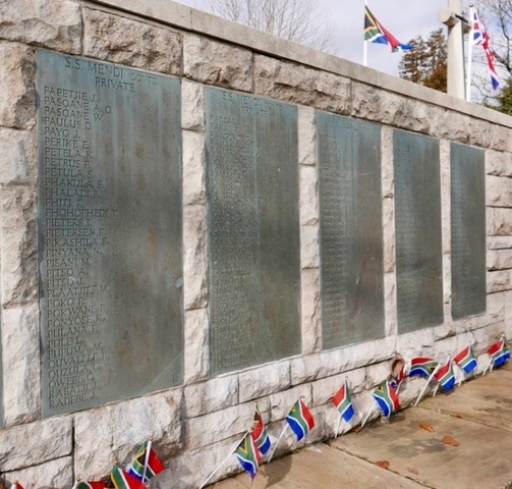The bell from the troopship SS Mendi, sunk with the loss of more than 600 South African soldiers during the First World War, has been handed to President Cyril Ramaphosa.
British Prime Minister Theresa May made the presentation at a ceremony in Cape Town, honouring the men of the South African Native Labour Corps (SANLC) who perished on their way to support Allied forces on the Western Front in 1917.
President Ramaphosa welcomed the return of the Mendi’s bell as a very important moment for the people of South Africa: “Through this act, we feel as if we have gone some way to return home the souls of our fallen soldiers.”
Of almost 650 troops and crew who died in the disaster, 607 were black soldiers of the SANLC recruited for essential labouring duties at the front.
Recognition
Britain says the handover of the bell on August 28 marks formal recognition of South African lives lost at sea in support of the UK during the Great War.
“We will be forever grateful for their sacrifice in a common cause, ” Theresa May said.
SS Mendi sailed from Cape Town on her final voyage in January 1917.
Early in the morning of February 21, the troopship was accidentally rammed by a much bigger vessel in fog off the Isle of Wight while on the last leg of the journey to France.
The Mendi wreck site is a protected war grave.
But in the wake of the 2017 Centenary commemorations, a BBC journalist found the ship’s bell, wrapped in a plastic bag at Swanage pier in Dorset, after receiving an anonymous call. Under maritime law, it was handed to the UK Receiver of Wreck. Exhibitions followed at museums in Southampton and the Isle of Wight.
South Africa’s annual commemorations of the Mendi disaster, introduced in the post-apartheid era, have raised wider awareness of the tragedy and the contribution of the South African Native Labour Corps to the British war effort in WW1.
Since 2003, the Mendi has given its name to the highest South African award for bravery.
Centenary News reported from the February 2017 Centenary commemorations at the Hollybrook Memorial, Southampton.
See also Focus on the Hollybrook Memorial, an interactive guide, produced by the Maritime Archaeology Trust.
Source: UK Government & South African Presidency
Images: Centenary News
Posted by CN Editorial Team
